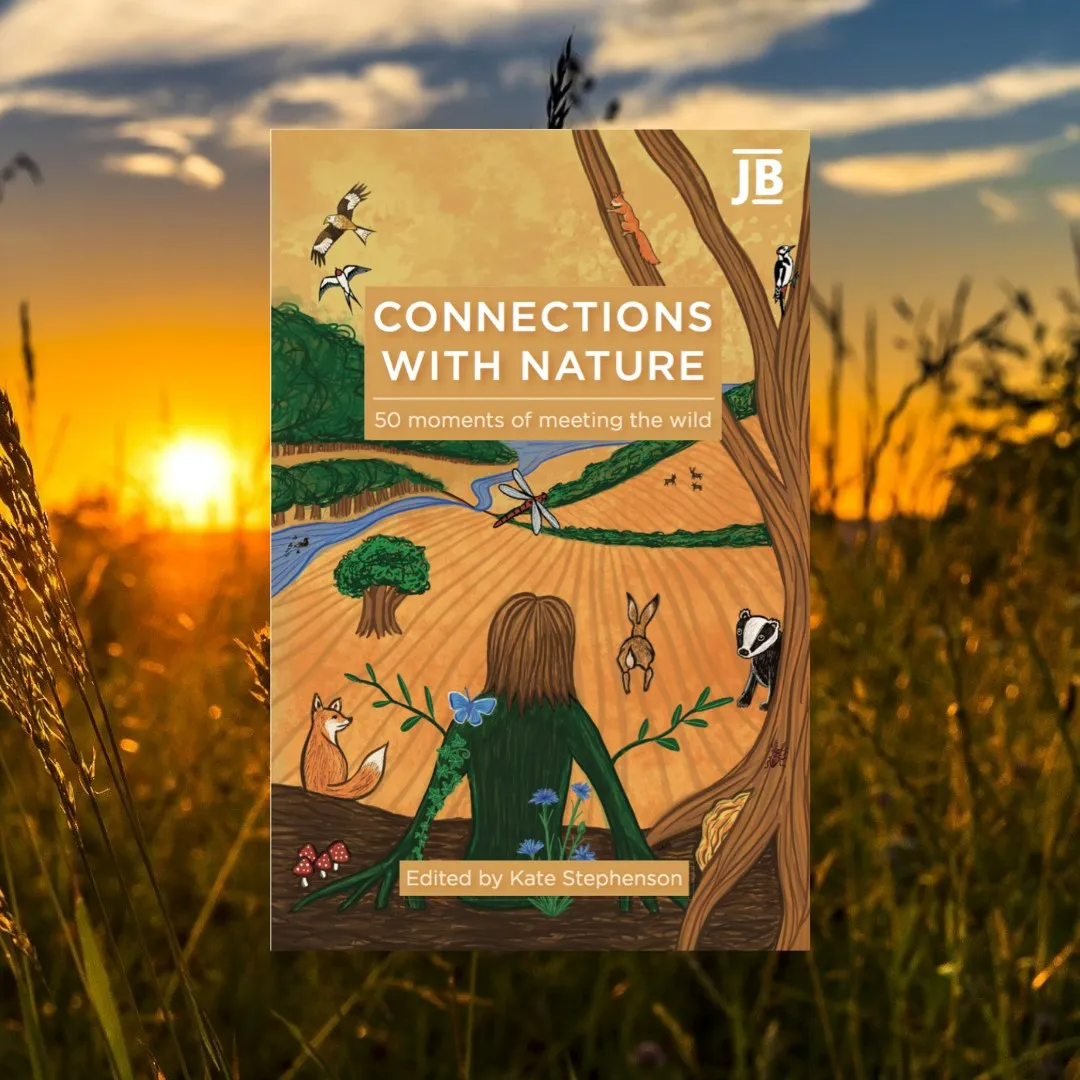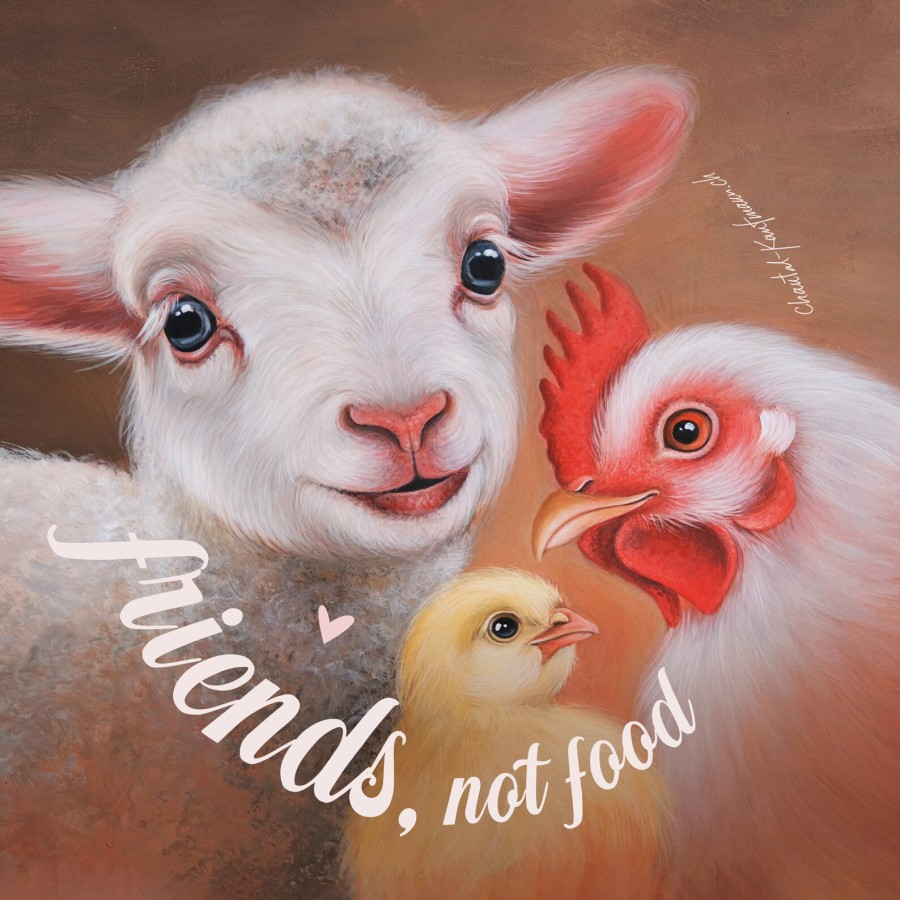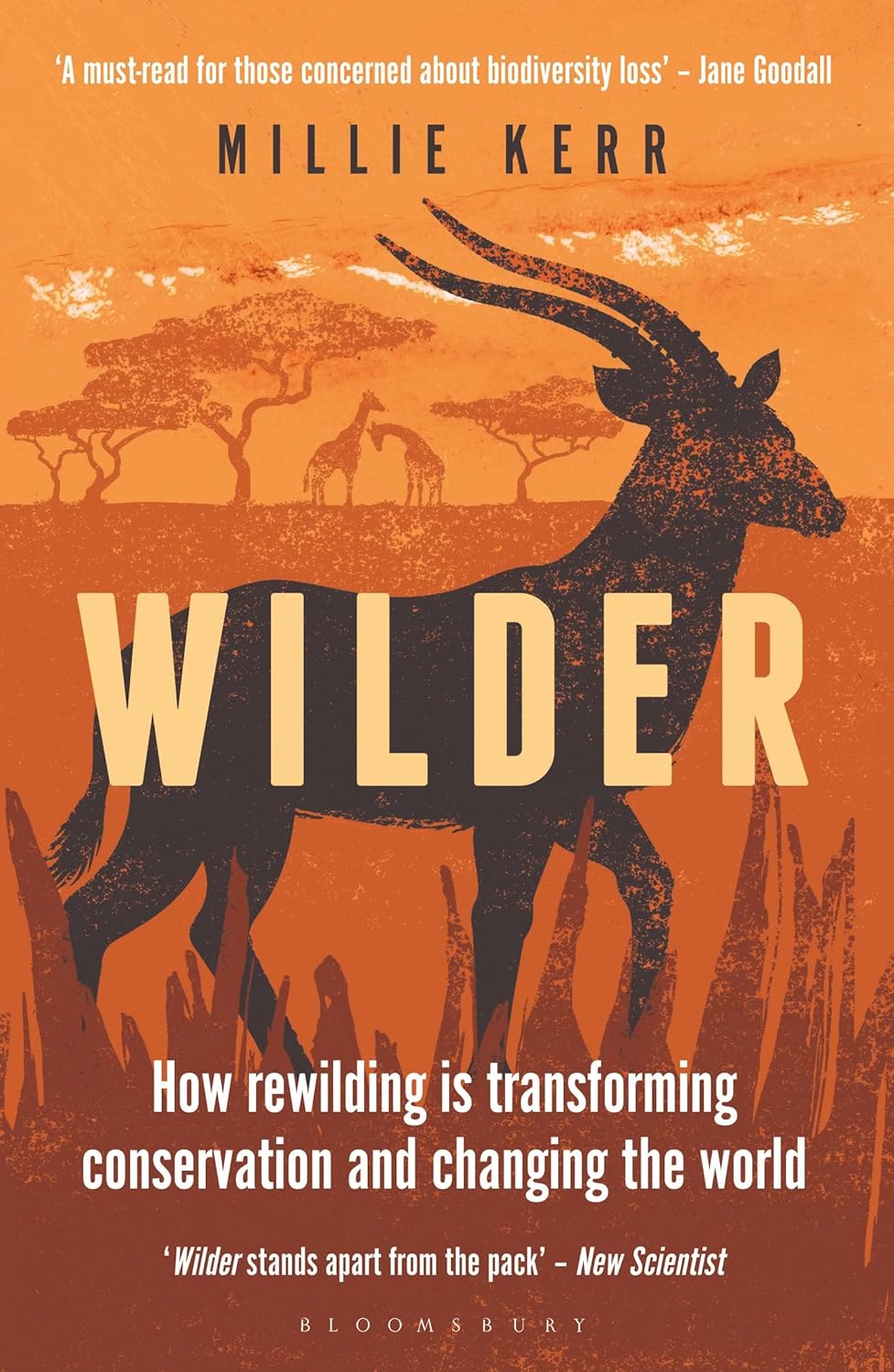
Rewilding simply means returning animals or plants where they used to live. Obviously you need expert help, but whwen done well, it points the way to a more hopeful future. Read about wolves that were returend to Yellowstone National Park (and dramatically improved the ecosystem), giant tortoises who survived extinction by returning to their island homes. And closer to home, beavers who have been reintroduced to old territories, where they are building dams, to help prevent floods.
Wilder is the story of the the global journey by passionate conservationists, who are using a passive approach to restore ecological areas, yet also actively rewilding other areas, where species are at risk and need to be reintroduced to natural environments, then left alone.
Wildlife journalist Millie Kerr details the return of jaguars to an Argentiniana national park, the firt pangolin reintroduction project in South Africa, and ways in which giant tortoises are aiding the recovery of ecosystems throughout the Galápagos Islands. Millie gave up her law career to focus on writing and photographing wildlife conservation.
the most inspiring stories of rewilding
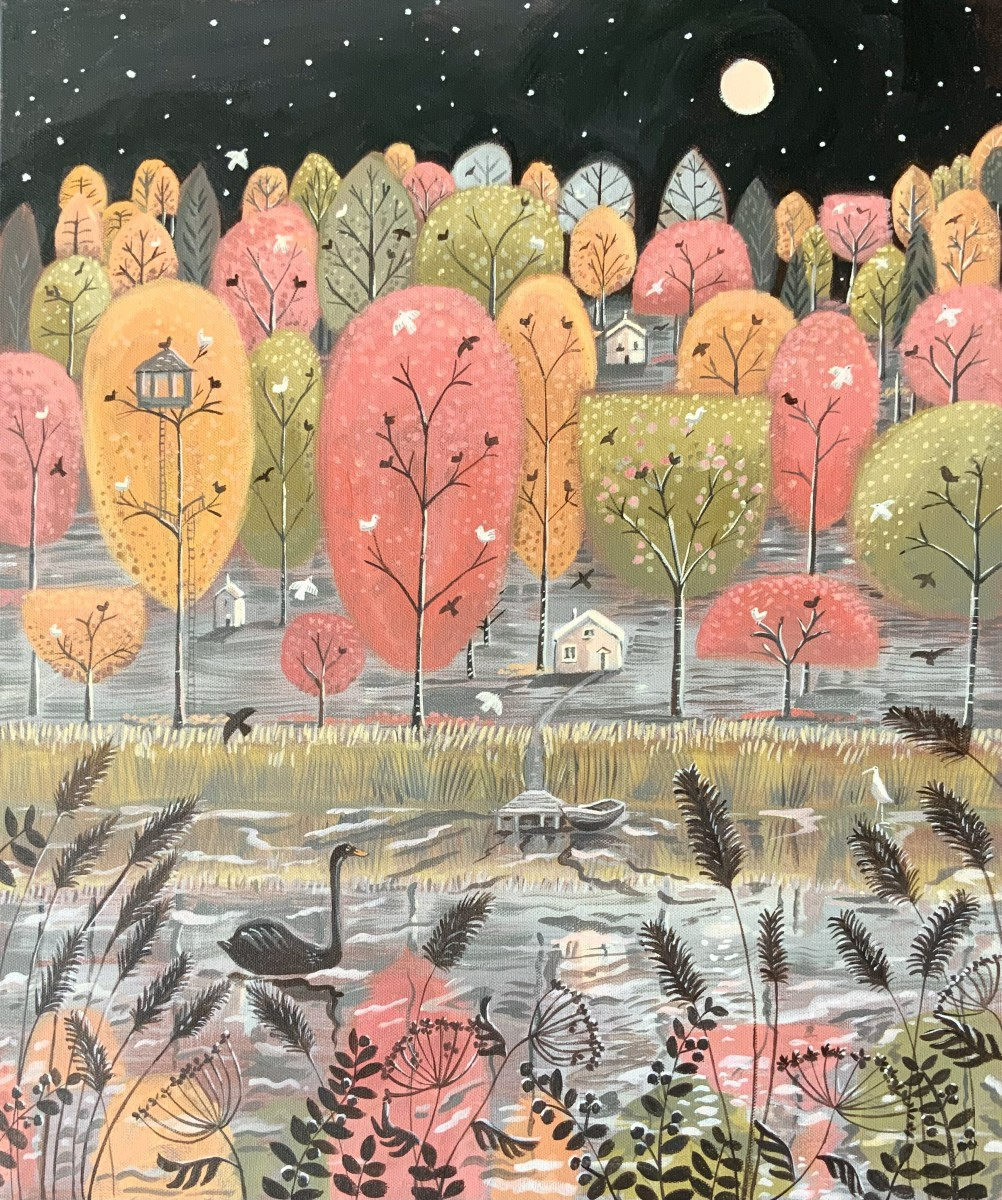
Wild Fell is a book by ecologist Lee Schofield, who is leading efforts to breathe life back into two hill farms and 30 square kilometres of sprawling upland habitat in the remote eastern fells of the Lake District. It was a tragic day for the nation’s wildlife when England’s last lonely golden eagle died in an unmarked spot here. But the right has already begun to restore the landscape. Lee and his team are restoring damaged wetlands, meadows and woods and each year, the landscape is becoming richer, wilder and better able to withstand the shocks of a changing climate.
But in this contested landscape, change is not always welcome. So success relies on finding a balance between rewilding and respecting cherished farming traditions. This is not just a story of an ecosystem in recovery, but also a personal story of connection to place, and the highs and lows of working for nature, amid fierce opposition.
An Irish Atlantic Rainforest is an award-winning book that charts the remarkable journey of a wild forest that bursts into life before our eyes, inviting us to consider the burning issues of our time: climate breakdown, ecological collapse and why we need to radically transform our relationship with nature.
On the Beara peninsula of West Cork in Ireland, a temperate rainforest flourishes, due to the life work of Egohan, who had a vision to move from Dublin with family to rewild a 73-acre farm that he bought. This is a story more of doing nothing than taking action – allowing natural ecosystems to return and thrive without interference, an in doing so, heal an ailing planet. An enduring picture of the regenerative force of nature, and how one Irishman let it happen.
Eoghan Daltun is a conservationist, farmer and rewilder. He spent 7 years studying sculpture in Tuscany, Italy. He rebuilt a 1750s cottage using the original stone and used the proceeds to buy a long-abandoned farm overlooking the Atlantic, the land ecologically wrecked by severe over-grazing and invasion by a host of alien plant species.
a book of rewilding stories for bedtime
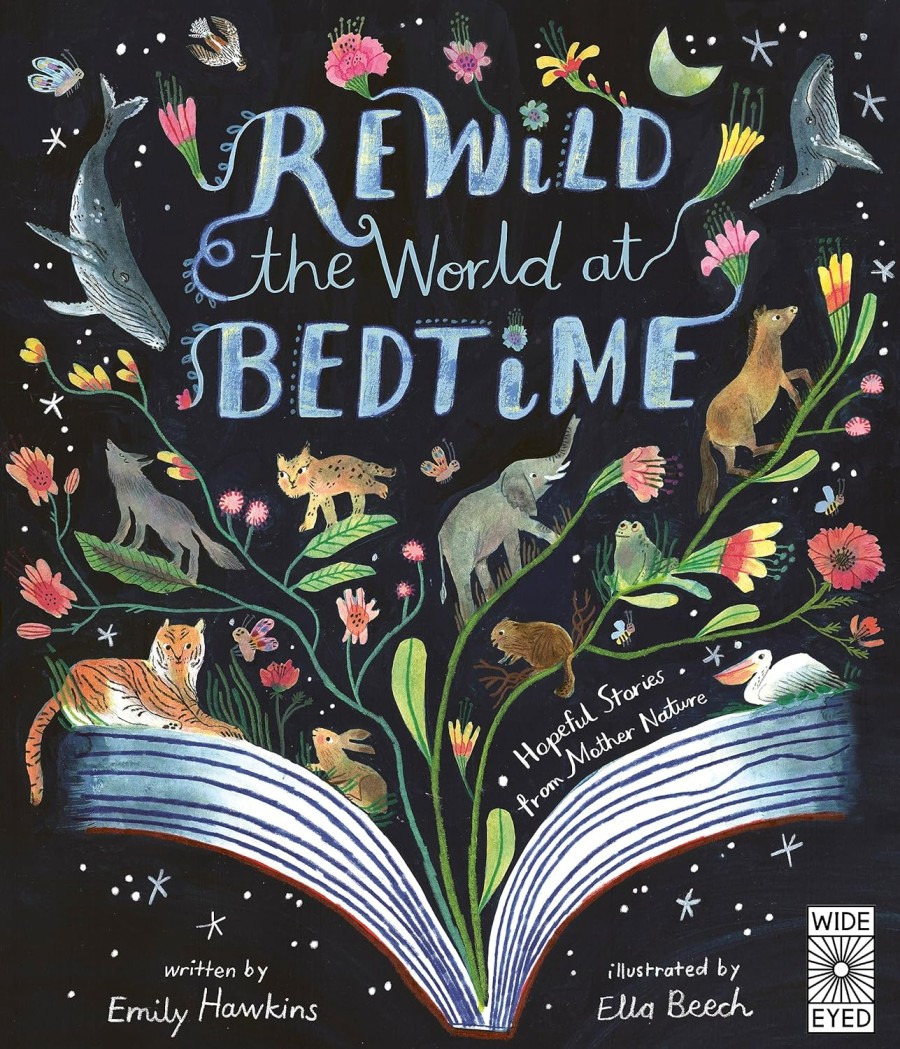
Rewild the World at Bedtime is a beautiful keepsake collection of calming wildlife stories to read at bedtime, for children to learn about projects that are rewilding the world with animals, and saving our planet. From Colombia to Indonesia, 40,000 unique species are threatened with extinction, and it’s never been a better time to teach children of the power of conservation.
This enchanting read soothes little ones with 20 stories about nature healing itself, when animals are returned to their natural habitats, without human interference. The animals rewilded include:
- Eurasian beavers (reintroduced to Devon rivers)
- Endangered tigers (saved with animal dung stoves in Nepal)
- Peaceful water buffalos (part of a Ukrainian restoration project)
- Adorable lynx (released from captivity in the Iberian Peninsula)
- Majestic humpback whales (banned from being hunted)
Emily Hawkins was once a children’s book editor and now writes books herself. She holds a first-class degree from Nottingham University, and lives in Winchester.
an inspiring personal journey of rewilding
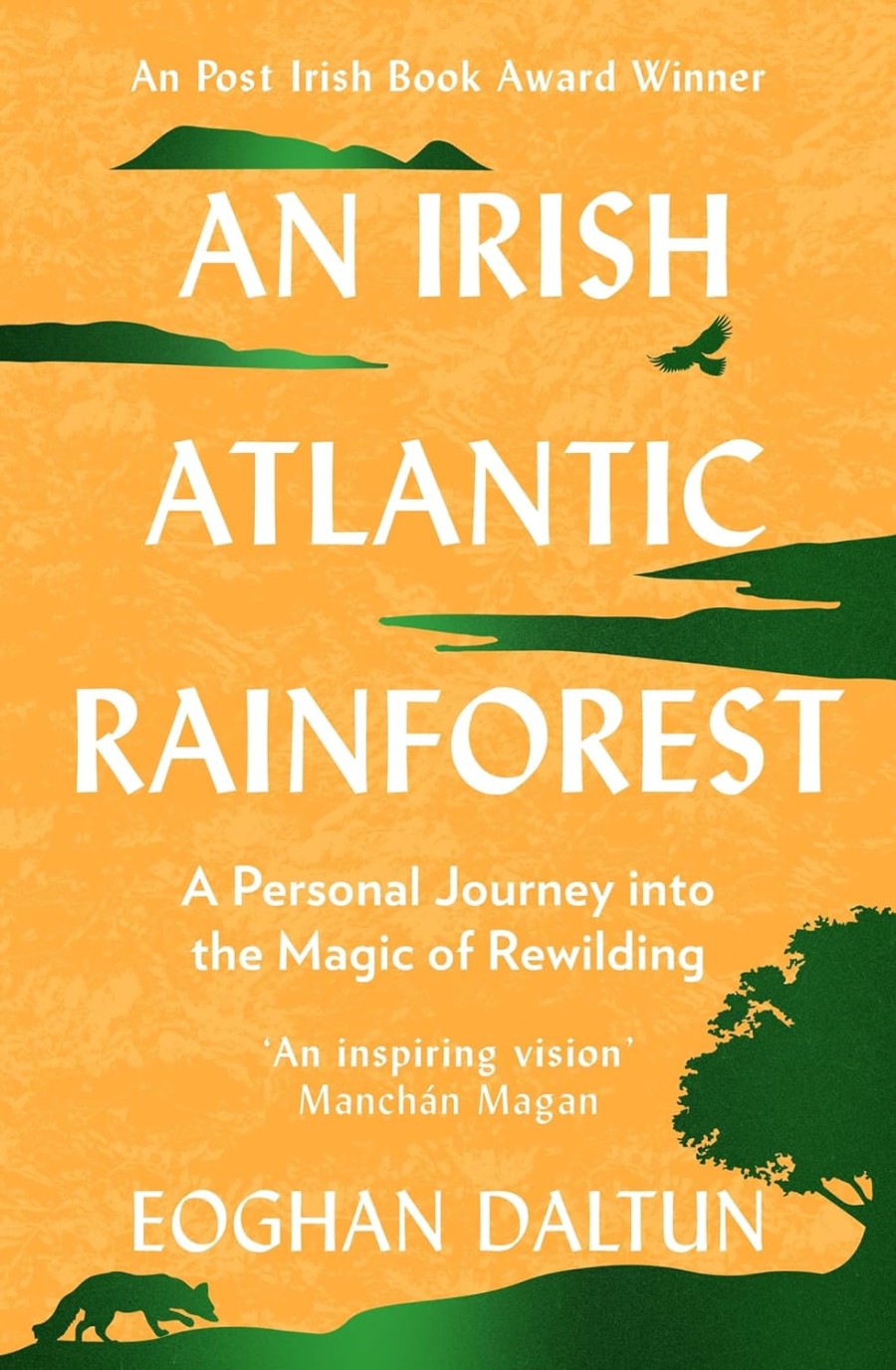
An Irish Atlantic Rainforest is an award-winning book that charts the remarkable journey of a wild forest that bursts into life before our eyes, inviting us to consider the burning issues of our time: climate breakdown, ecological collapse and why we need to radically transform our relationship with nature.
On the Beara peninsula of West Cork in Ireland, a temperate rainforest flourishes, due to the life work of Egohan, who had a vision to move from Dublin with family to rewild a 73-acre farm that he bought. This is a story more of doing nothing than taking action – allowing natural ecosystems to return and thrive without interference, an in doing so, heal an ailing planet. An enduring picture of the regenerative force of nature, and how one Irishman let it happen.
Eoghan Daltun is a conservationist, farmer and rewilder. He spent 7 years studying sculpture in Tuscany, Italy. He rebuilt a 1750s cottage using the original stone and used the proceeds to buy a long-abandoned farm overlooking the Atlantic, the land ecologically wrecked by severe over-grazing and invasion by a host of alien plant species.


